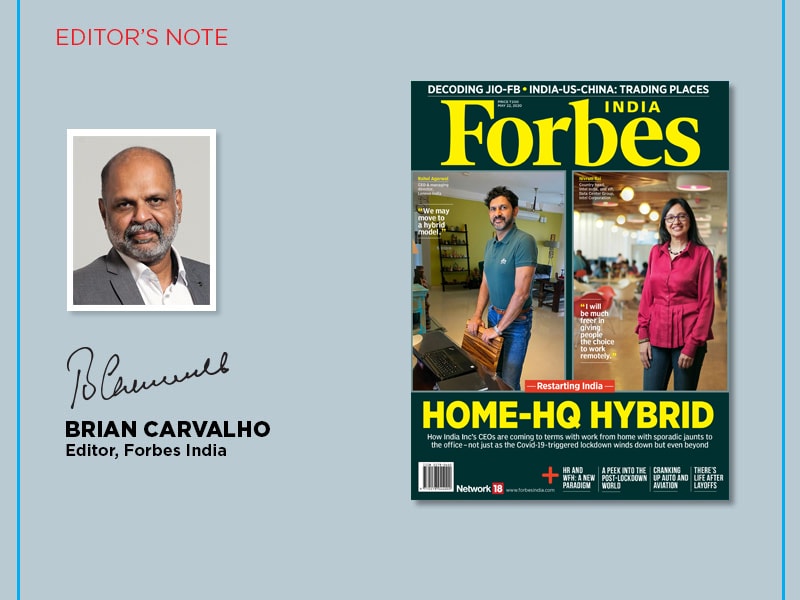
Ready, Set...
The priority is to get the wheels of the economy moving, while controlling the virus

Thirty-eight days into the lockdown, the nervy jokes had dried up, and fewer hipsters were asking the ‘what’s-the-first-thing-you’re going-to-do-when-this-blows-over’ question. That’s because the realisation had seeped in: This isn’t going to blow over in a hurry.
Deadlines for lockdowns to end look silly in hindsight, in the face of the rising number of infections and containments in areas with high population densities. And, sure enough, on the 38th day came the order from the Ministry of Home Affairs (MHA) of an extension for two more weeks from May 4. Albeit with considerable easing, even in red zones.
Every day is a different day in Covid19 times. It’s now dawned that there is no end game—not until a vaccine is ready—and that Covid19 is an evolving phenomenon. Green zones can turn orange overnight, and orange to red in under 14 days.
Yet, the lockdown can’t go on forever, as the supply chains and demand for goods need to be fixed, businesses need to resume operations, call back workers and pay them. Export lines have to be restored with Covid19-hit countries and imports too particularly from China need to get going. Shops and restaurants need to reopen, public transport restarted and agricultural harvests reaped optimally.
To these ends, each Indian state and city will embark on that long road to normalcy, with the pace and agility the patches of red over their districts allow for. Mumbai, Ahmedabad and Delhi, the cities with the highest number of infections, have their task cut out, even as Punjab announced its exit strategy in April’s last week. A couple of days before announcing it would extend the lockdown till May 17, a state-appointed taskforce allowed, among a host of measures, industrial and commercial units outside of urban containment zones to operate. Other states too are readying to restart activity in relatively unaffected districts.
The priority clearly is to get the wheels of the economy moving, and this fortnight’s package of stories delves into the many ways to do it. The MHA order allows for private offices to operate with up to 33 percent strength, with the remaining working from home. Taking off from our work-from-home (WFH) cover story a couple of issues ago, we discovered that India Inc’s CEOs are prepped for a hybrid mode of working: From home and the headquarters. As CP Gurnani, CEO of Tech Mahindra, told Naandika Tripathi and Pankti Mehta Kadakia, who put together this fortnight’s cover story: “I believe we will move permanently to a hybrid model [WFH and limited visits to office].”
If CEOs are buying into WFH, it’s up to human resources (HR) departments to ensure that the movement percolates down the organisation. Divya Shekhar tracks how HR has taken upon itself to manage the workforce remotely, and change the way of working—of both employees and the HR staff themselves.
Five weeks of lockdown are enough to change our behaviour as workers and consumers. Once we step out, we’re likely to encounter a whole new world. Kathakali Chanda picks up cues from global cities that have eased restrictions—from Beijing to Auckland—to paint a picture of life after lockdown.
The billion-dollar challenge, though, is to revive the economy. Salil Panchal zeroes in on sectors that are poised to bounce back faster, and Manu Balachandran analyses the plans of two critical sectors to restart operations: Automobiles and aviation. The buzzword clearly is calibration: In easing restrictions so that business can resume, as well as in controlling the virus.
Read the digital issue, free to download, here
Best,
Brian Carvalho
Editor, Forbes India
Email:Brian.Carvalho@nw18.com
Twitter id:@Brianc_Ed
(This story appears in the 30 November, -0001 issue of Forbes India. To visit our Archives, click here.)





